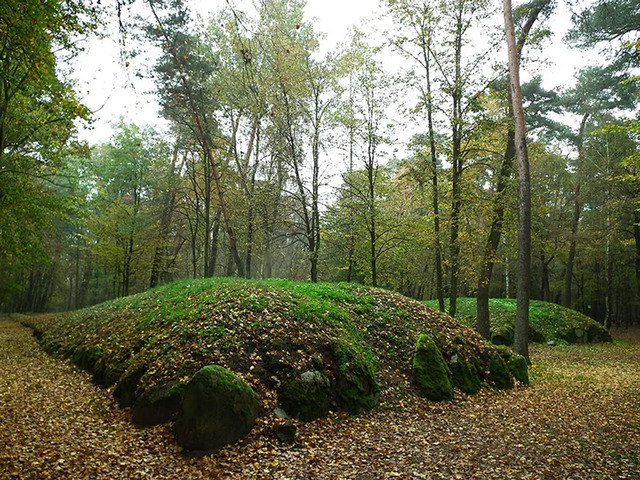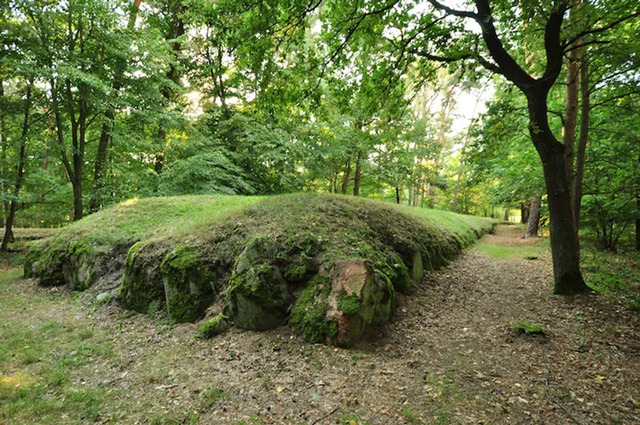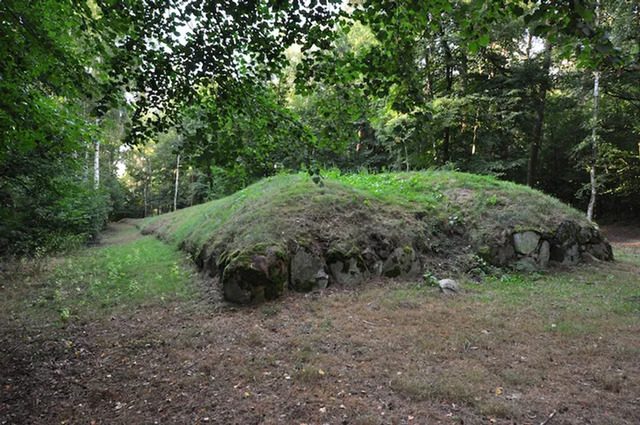Deep within the forests of Western Pomerania, Poland, archaeologists have made a remarkable discovery that’s reshaping our understanding of prehistoric Europe. A series of monumental megalithic tombs, dubbed the “Polish Pyramids,” have emerged as silent witnesses to a sophisticated civilization that existed thousands of years ago.
The Remarkable Discovery

Led by Dr. Agnieszka Matuszewska from the University of Szczecin and colleague Marek Schiller, researchers have unveiled over a dozen megalithic tombs using cutting-edge technology. These massive structures, featuring elongated triangular shapes and enormous stone blocks, stretch up to 150 meters in length and reach heights of 3 meters, rivaling some of Europe’s most famous prehistoric monuments.
Technology Meets Ancient Architecture

The discovery owes much to modern innovation, with researchers employing airborne laser scanning (ALS) and digital terrain modeling (DTM) to peer beneath the dense forest canopy. This technological approach, combined with the ISOK project database, has revealed 18 Kujawy-type megalithic tombs – far more than previously documented.
The Funnel Beaker Culture: Builders of the Pyramids
These impressive structures were created by the Funnel Beaker Culture, a prehistoric society that flourished between the 5th and 3rd millennia BC. Known for their advanced pottery and agricultural practices, these ancient builders reserved these tombs for their elite members, creating lasting monuments that would endure for millennia.
A European Connection

Intriguingly, the design of these Polish Pyramids shares remarkable similarities with megalithic structures found across Western Europe and Scandinavia, suggesting possible cultural exchanges or shared traditions among prehistoric European societies.
Preservation Challenges and Future Insights
Today, these ancient monuments face significant preservation challenges. Many tombs have been lost to time and human activity, with only those hidden in forested areas surviving into the modern era. However, each surviving structure provides valuable insights into prehistoric life, including evidence of livestock-based economies and small settlement networks.
Video
Beyond the Tombs

The archaeological significance extends beyond the pyramids themselves. Researchers have discovered additional tombs in Ploszkowo and settlement networks that housed small communities of up to 10 families, offering a broader picture of life during this fascinating period.
The Enduring Mystery

While these discoveries have illuminated much about the Funnel Beaker Culture, many questions remain. The absence of common burial grounds for ordinary citizens and debates about cultural connections with Slavic, Germanic, and Celtic peoples continue to intrigue archaeologists.
A Window to the Past

As research continues, these Polish Pyramids stand as testament to human ingenuity and cultural sophistication from over 5,000 years ago. Their presence not only enriches our understanding of prehistoric Europe but also reminds us that many secrets of our ancient past still await discovery.

